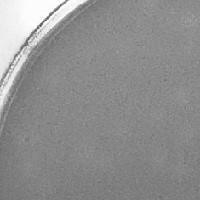Mycobacterium phage Mystique
Add or modify phage thumbnail images to appear at the top of this page.
Know something about this phage that we don't? Modify its data.
| Detailed Information for Phage Mystique | |
| Discovery Information | |
| Isolation Host | Mycobacterium smegmatis mc²155 |
| Found By | Cassandra Ellis |
| Year Found | 2014 |
| Location Found | Fort Myers, FL USA |
| Finding Institution | Florida Gulf Coast University |
| Program | Science Education Alliance-Phage Hunters Advancing Genomics and Evolutionary Science |
| From enriched soil sample? | Yes |
| Isolation Temperature | Not entered |
| GPS Coordinates | 26.419278 N, 81.8075 W Map |
| Discovery Notes | I found the phage at a horse farm in Buckingham (about 20 mi NE of Ft. Myers). The sample was taken from the base of the collective pile of horse manure. The pile consisted of manure from 6 horses. At least one of them, a 4 yr old filly, was sick (most likely with pneumonia). There was also a 20 yr old horse and an old mule, along with a few others. The particular sample was mostly dry, but not entirely. I specify because the sick filly's poo was very liquid-y and the horses that were healthy had dry poo. I am unsure as to whether the sample came from the sick filly or a healthy horse. I took the sample from the bottom of the large pile, so since it was slightly wet, it make have been a couple of days old, from the sick horse. The reason I think the phage was from the sick filly is that rhodococcus equi, a relative (same genus different species) of rhoglo, causes pneumonia in foals (young horses). So since Gator Girl, the filly, was sick the virus I isolated probably came from the rhodococcus equi that infected her, which may explain why most of the phage was not lytic to our rhoglo (because it normally infects a different species of rhodococcus). |
| Naming Notes | According to Google, one definition for Mystique is: "an air of secrecy surrounding a particular activity or subject that makes it impressive or baffling to those without specialized knowledge." When the semester began, I felt that this sense of mystique surrounded the world of phage-hunting. Now, however, as the veil has been slightly lifted, I want to know more about virology. I find the second definition equally as relevant: "a fascinating aura of mystery, awe, and power surrounding someone or something." |
| Sequencing Information | |
| Sequencing Complete? | No |
| Genome length (bp) | Unknown |
| Character of genome ends | Unknown |
| Fasta file available? | No |
| Characterization | |
| Cluster | Unclustered |
| Subcluster | -- |
| Annotating Institution | Unknown or unassigned |
| Annotation Status | Not sequenced |
| Plaque Notes | My phage produces extremely turbid plaques with an average diameter of 1/4 cm, (once visible) after the web-plate (around the -3 dilution). The titer began very high and dropped off significantly, suddenly. Where plaques had, at a time, appeared down to the -9 dilution they were barely visible past the –4 plate, averaging about 4 large plaques (3/4 cm) per plate from -4— -6. Soon after, the plaques no longer appeared visible at all and each plate looked identical to my negative control. After 10 rounds of plaque purification, I processed my MTL and HTL. The plates produced barely visible plaques, which did not appear until the -3 of my HTL. Therefore, when I quantified my phage’s DNA I was surprised to find that it came out at 146.6 ng/ml. |
| Has been Phamerated? | No |
| Publication Info | |
| Uploaded to GenBank? | No |
| GenBank Accession | None yet |
| Refseq Number | None yet |
| Archiving Info | |
| Archiving status | Archived |
| Pitt Freezer Box# | 124 |
| Pitt Freezer Box Grid# | D1 |
| Available Files | |
| Plaque Picture | Download |
| EM Picture | Download |
